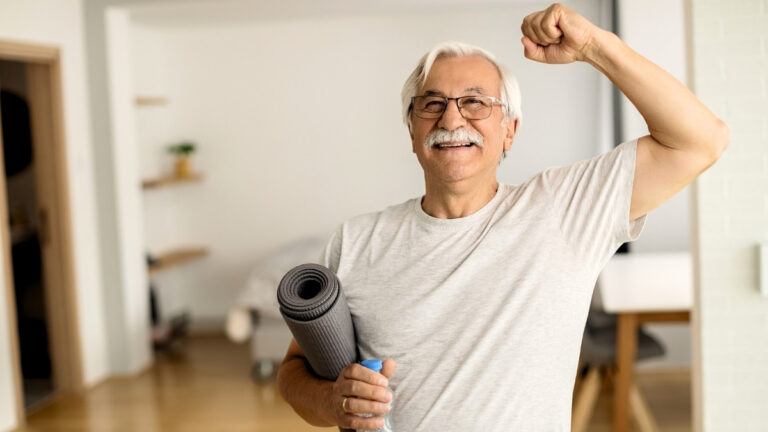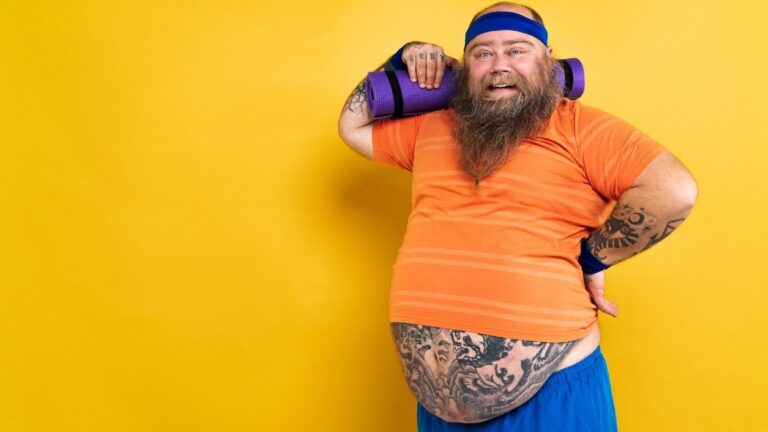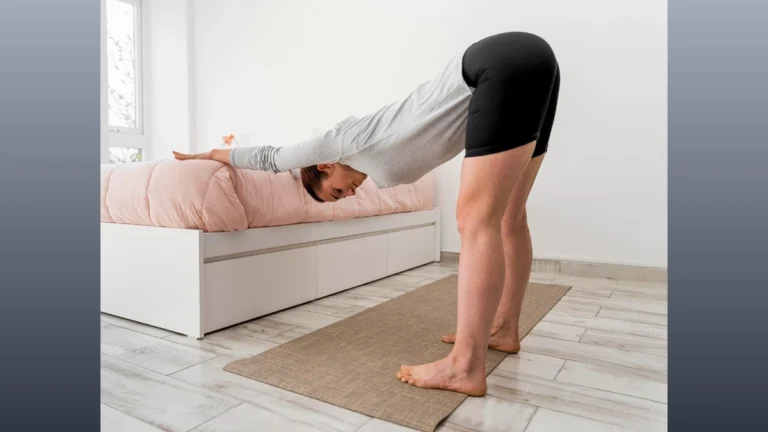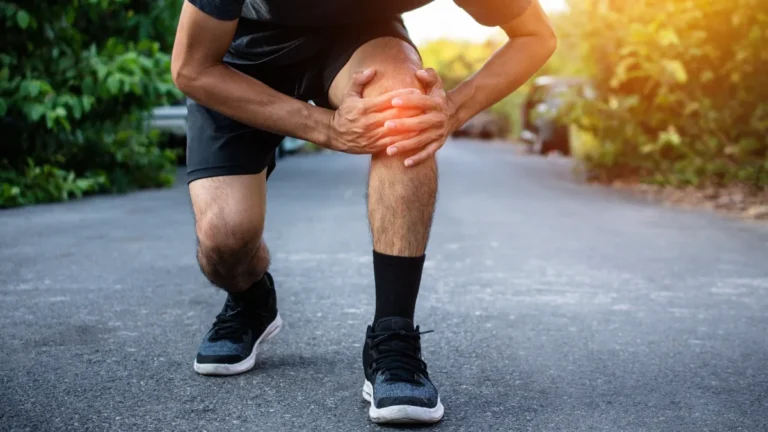8 Best Exercises for People In Their 50s and Over
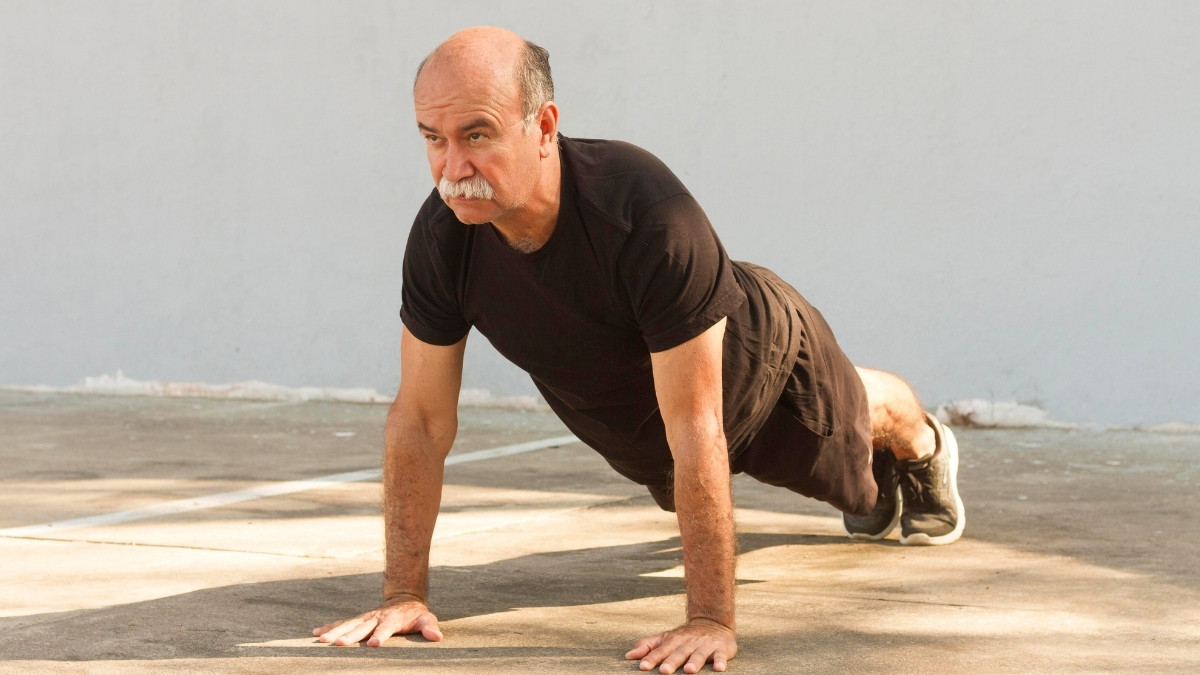
After 50, your body doesn’t respond to exercise the same way it did in your 30s—but that doesn’t mean you can’t be stronger, more mobile, and healthier than ever.
Many people in their 50s and beyond struggle to find safe and effective exercises for people over 50. Maybe you’re worried about getting hurt, making old aches worse, or just confused by advice that feels made for younger bodies. The real concern isn’t just fitness—it’s staying independent, steady, and pain-free for years to come.
In this guide, you’ll learn 8 proven moves that help maintain muscle mass and bone density, boost balance, and strengthen your heart through low impact exercises. Each one includes step-by-step form tips, smart modifications, and the right weekly schedule to follow.
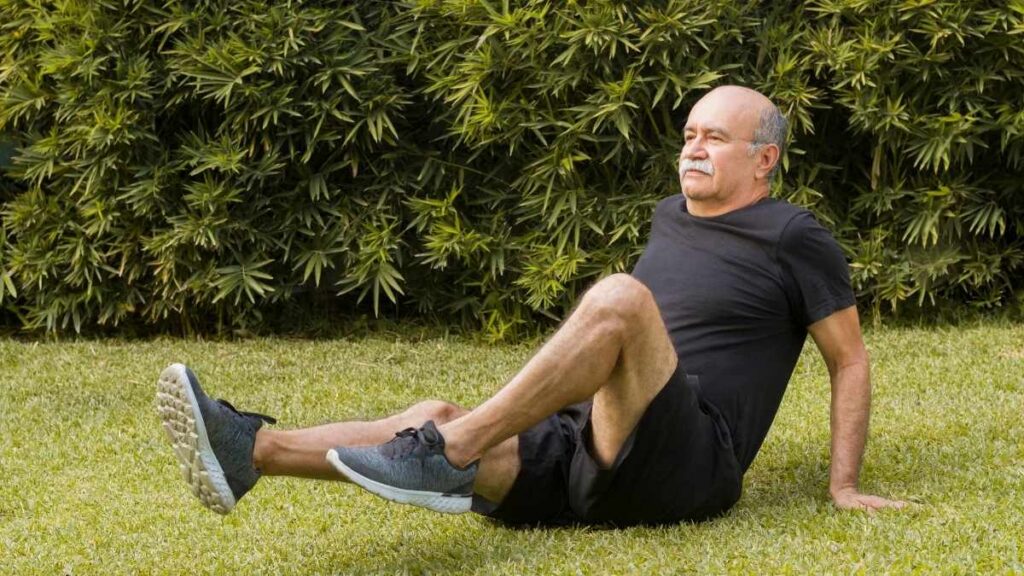
You’ll also see how strength training over 50 fits into a full routine that keeps your body capable—so you can keep doing the things you love every day.
💪 Exercise After 50: Your Complete Guide
Transform your health with proven, safe exercises designed for your body’s needs
- Sarcopenia accelerates after 50
- Makes daily tasks harder
- Reversible with resistance training
- Affects balance and mobility
- CDC data from adults 50+
- Strengthens bones and muscles
- Improves joint stability
- Protects from falls
- NIH study findings
- 1 in 4 adults over 65 fall yearly
- Simple exercises make big difference
- Improves proprioception
- Reduces all-cause mortality
- Strengthens cardiovascular system
- No gym needed
- 150 min/week recommended
👆 Click on any block above to see more details
Weekly: 2-3 times | 2 sets × 10-12 reps
Benefits: Engages 200+ muscles, builds independence for daily tasks
Modify: Wall → Chair → Bodyweight
Weekly: 2-3 times | 2 sets × 8-10 reps
Benefits: Joint-friendly, uses 41% body weight
Progress: Wall → Counter → Floor
Weekly: 3-4 times | 2 sets × 8-10 per side
Benefits: 28% reduction in back pain
Focus: Slow, controlled movements
Daily: 3-5 minutes total
Goal: Hold 10-30 seconds per leg
Safety: Keep chair nearby
Weekly: 2-3 times | 2-3 sets × 12-15 reps
Benefits: Fixes hunched shoulders
Equipment: 5-10 lbs resistance band
Weekly: 2 times | 2-3 sets × 8-10 per leg
Benefits: 25% more glute activation than squats
Start: 4-6 inch step, progress to 10-12
Weekly: 3-4 times | 2-3 sets × 12-15 reps
Benefits: No spinal compression, eases back pain
Hold: 2-3 seconds at top
Weekly: 150 minutes (30 min × 5 days)
Benefits: 20% lower mortality risk
Pace: Talk but can’t sing (60-70% max HR)
👆 Click on any exercise card to see workout details
📅 Your Weekly Exercise Plan
Why Exercise Changes After 50 (And What Your Body Needs Now)
Your body after 50 isn’t broken. It just works differently than it did at 30.
After 50, you lose 1-2% of your muscle mass every year if you don’t do resistance training. This process, called sarcopenia, starts in your 30s but speeds up after 50. You might notice it when lifting groceries feels harder or getting up from a low chair takes more effort.
Your bones change too. Bone density drops, especially for women after menopause. This makes bones fragile and increases the risk of breaks from simple falls. Men experience this too, just more slowly.
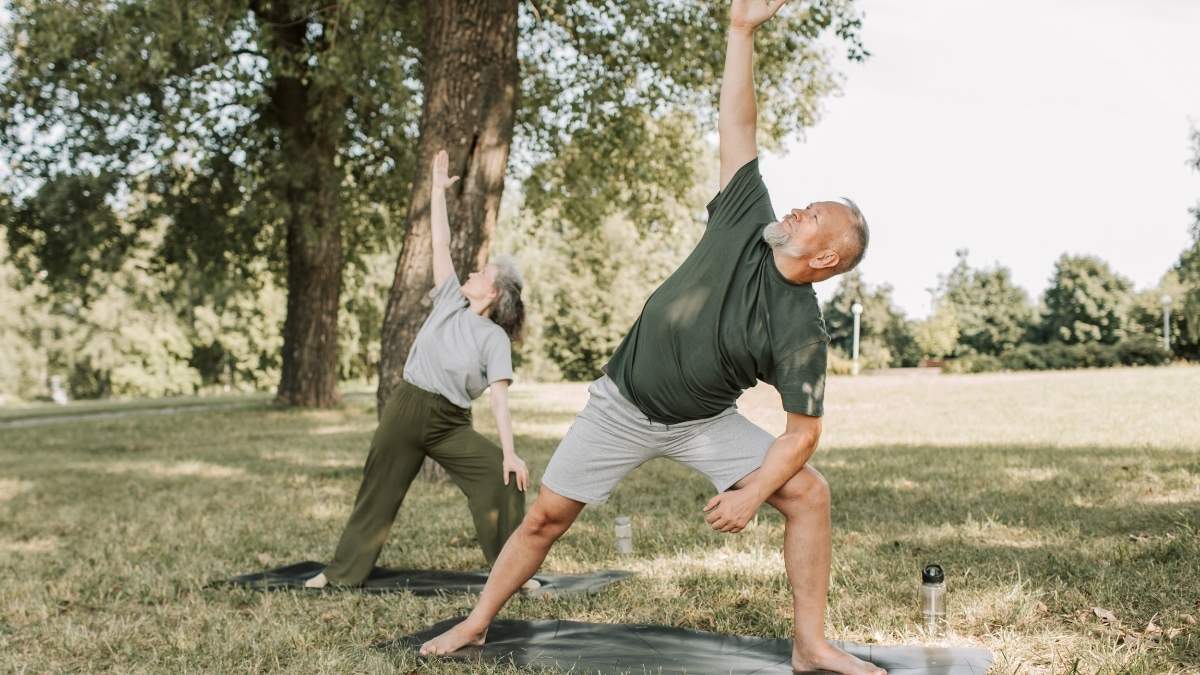
Balance becomes trickier. Your body’s sense of where it is in space (proprioception) gets less accurate. The CDC reports that 1 in 4 adults over 65 falls each year. Many of these falls cause serious injuries that steal independence.
Your metabolism slows down by 2-8% each decade. This means you burn fewer calories doing the same activities. Weight creeps up even when you eat the same amount as before.
Joint cartilage wears thinner over time. High-impact activities that felt fine in your 20s might cause pain now.

Here’s the good news: adults 50+ who do strength training twice a week reduce their injury risk by 68%, according to CDC data. Harvard Medical School research shows that exercises for seniors who stay active live longer, healthier lives.
The right exercises for people over 50 focus on building muscle mass, protecting bone density, and improving balance training. That’s exactly what you’ll learn next.Retry
1. Squats (Building Lower Body Foundation)
Squats keep you independent. They build the leg strength you need to stand from the toilet, carry groceries, and climb stairs without grabbing the railing.
Squats engage over 200 muscles at once. They work your quads, glutes, and hamstrings—the exact muscles that let you move through daily life without help. This makes squats one of the best lower body exercises for functional fitness.
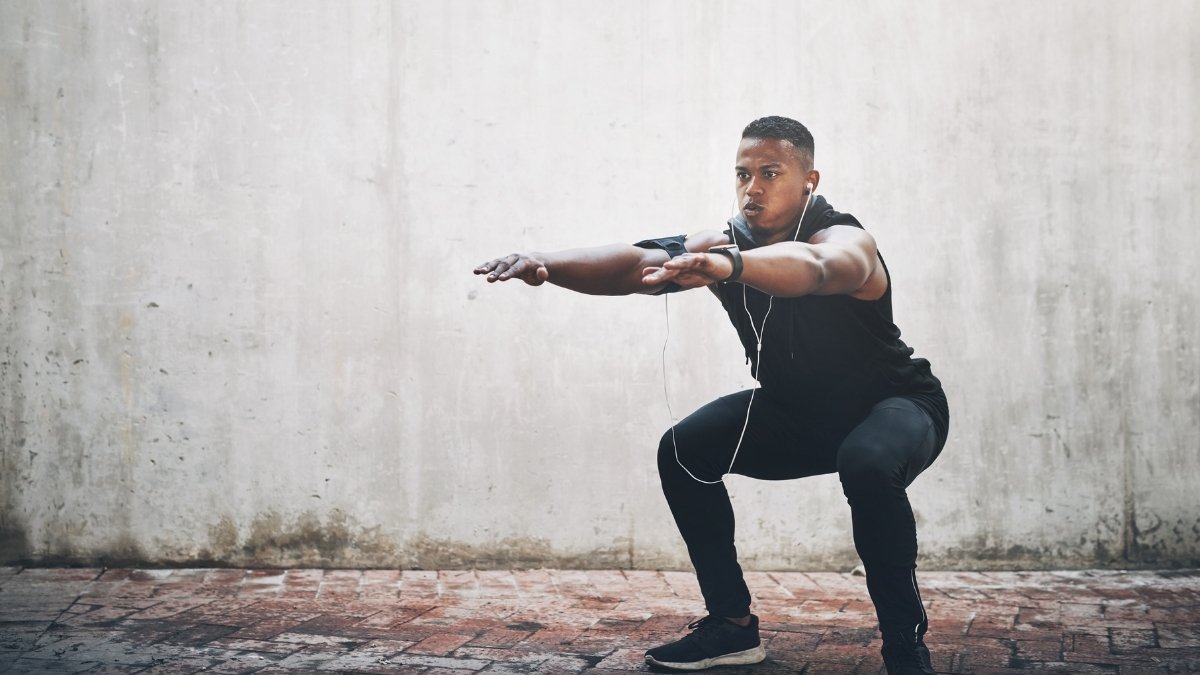
Here’s how to do them right:
Proper Form:
- Stand with feet shoulder-width apart
- Keep your chest up and look straight ahead
- Push your hips back like sitting in a chair
- Lower down until thighs are parallel to the floor (or as low as comfortable)
- Press through your heels to stand back up
- Keep knees tracking over your toes (don’t let them cave inward)
Three Ways to Modify:
Wall Squats (Beginner): Lean your back against a wall and slide down. Hold for 10-30 seconds. This builds strength without balance challenges.
Chair Squats (Intermediate): Stand in front of a chair. Lower until you lightly touch the seat, then stand back up. The chair gives you confidence and prevents going too low.
Bodyweight Squats (Advanced): Do the full movement without support. Focus on control and depth.
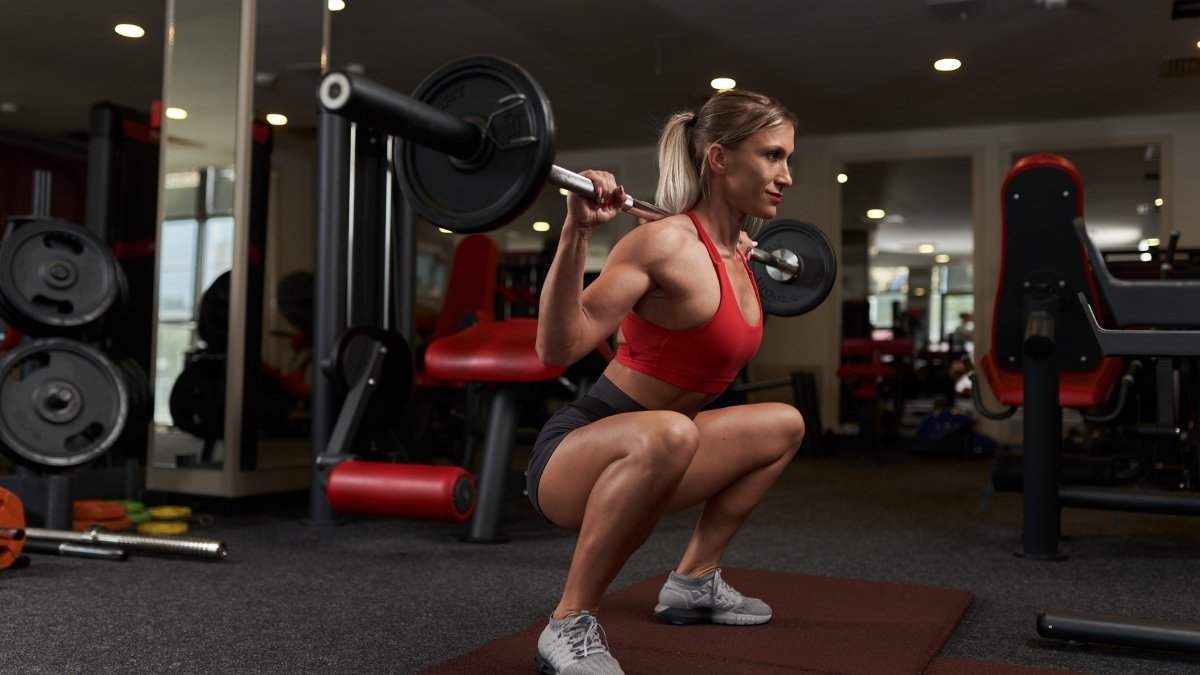
If you have knee arthritis, limit your depth to a 45-degree bend. You still get benefits without the pain.
Common mistakes: Don’t let your knees collapse inward. Don’t lean too far forward. And don’t rush—control matters more than speed.
Do squats 2-3 times per week. Start with 2 sets of 10-12 reps. This strength training over 50 approach builds muscle without overdoing it.
2. Wall or Incline Push-Ups (Upper Body Strength Without Joint Stress)
Want stronger arms without hurting your shoulders or wrists? Wall or incline push-ups are one of the best low impact exercises for building upper body strength—especially great as exercises for seniors.
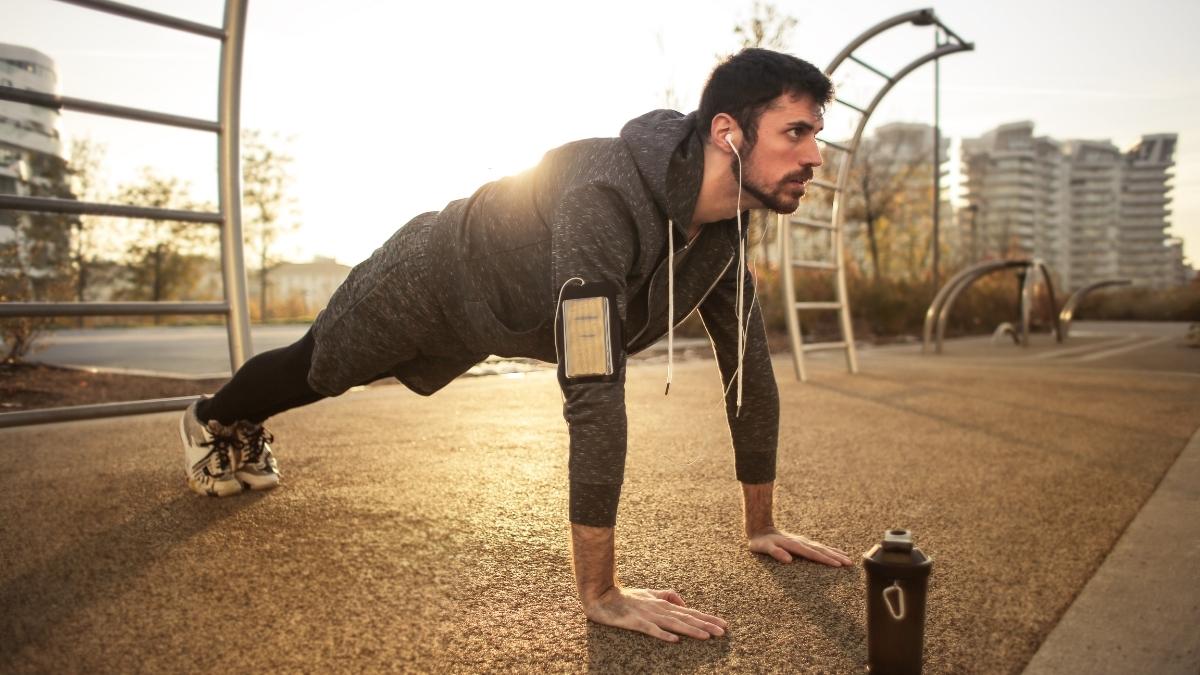
These push-ups work your chest, shoulders, triceps, and core without putting too much pressure on your joints. Doing them against a wall or a counter makes them safer and easier to control. In fact, wall push-ups use about 41% of your body weight as resistance, giving beginners just the right challenge.
As you get stronger, lower your angle: wall → counter → elevated surface → floor. This slow change helps your body adapt safely.
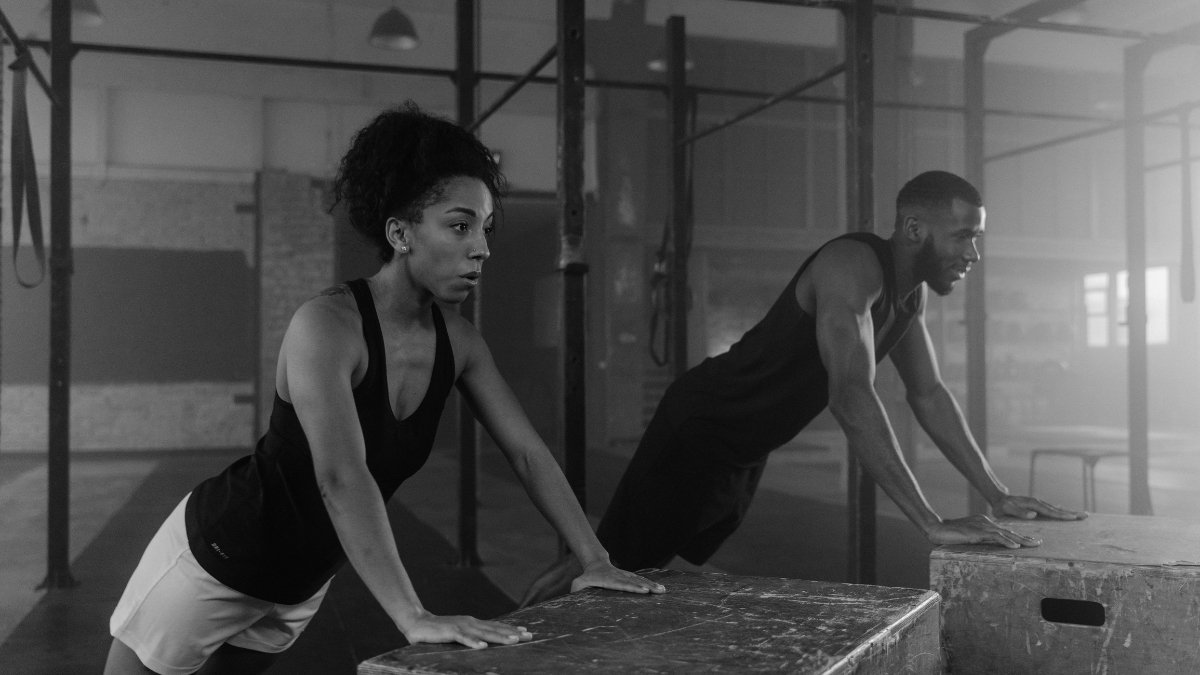
Form matters:
Keep your hands slightly wider than shoulder-width, your body straight, and lower yourself slowly until your nose almost touches the wall. Then push back up with control.
Start with 2 sets of 8–10 reps, and work up to 3 sets of 12–15.
A simple hand placement guide: imagine your palms at shoulder height, fingers pointing slightly outward, and elbows bending at a 45° angle from your sides.
3. Bird Dog (Core Stability and Balance)
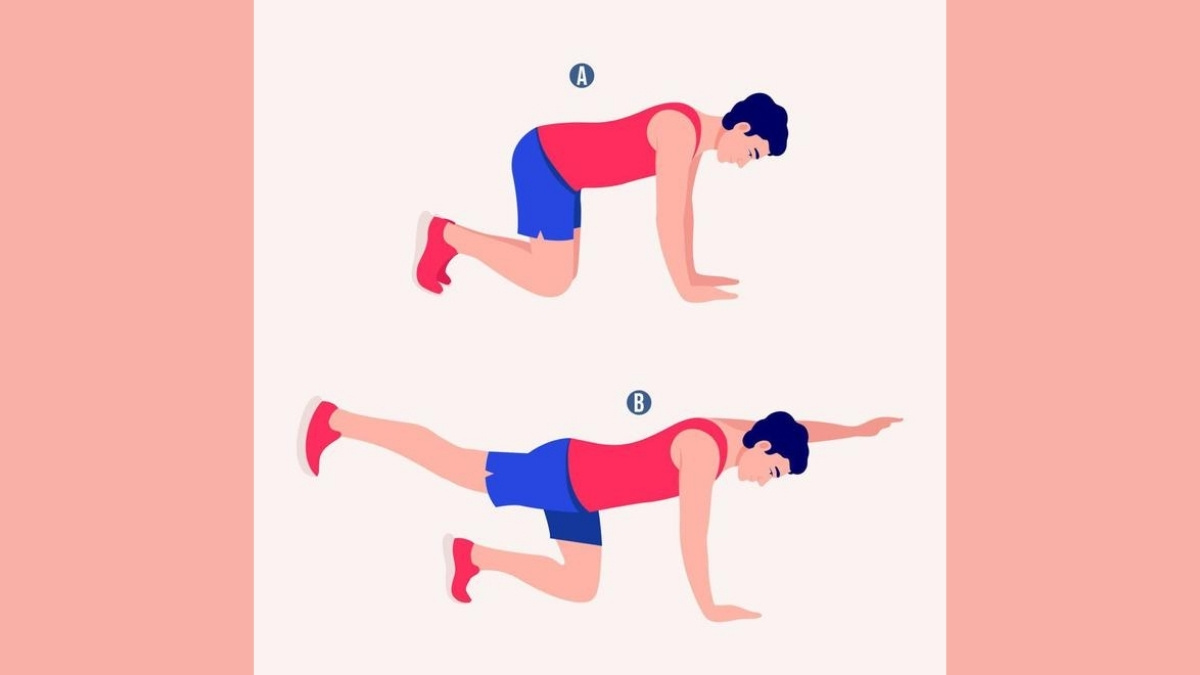
Want better balance and fewer back aches after 50? The Bird Dog is one of the best core strength and balance exercises for people over 50. A strong core supports your spine, improves posture, and keeps you steady on your feet. Studies show core exercises can reduce lower back pain by 28% in adults over 50.
Here’s how to do it:
Start on your hands and knees. Keep your back flat. Slowly extend your right arm and left leg until they form a straight line. Hold for 5–10 seconds, then return to start. Switch sides. Move slowly—this is about control, not speed.
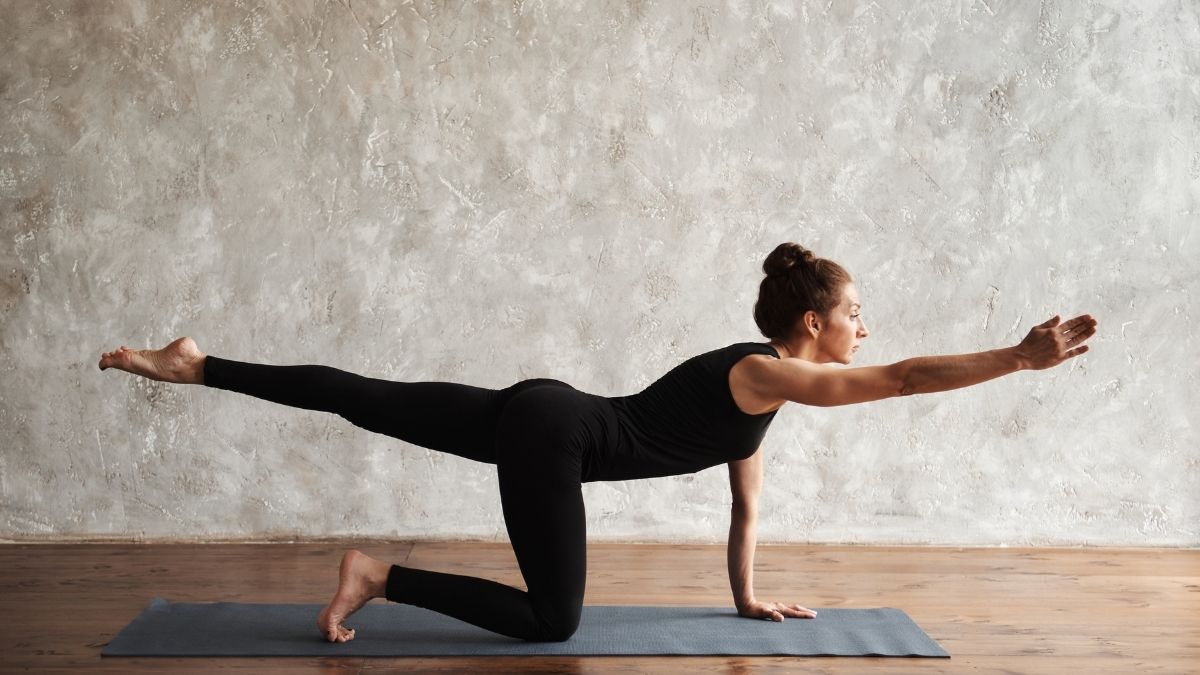
The balance part works because your body fights to stay stable, which strengthens deep core muscles. This improves proprioception—your body’s sense of position.
Modifications:
Keep your toes on the ground if balancing is tough. Want more challenge? Try closing your eyes.
Do this 3–4 times a week, 2 sets of 8–10 per side.
Small effort, big payoff—you’ll stand taller, move easier, and feel more confident.
4. Single-Leg Stands (Fall Prevention Powerhouse)
Worried about losing balance or falling as you age? You’re not alone. Falls are the leading cause of injury in adults over 65, but simple balance training over 50—like Single-Leg Stands—can make a big difference.
Here’s how to do it: stand on one leg for 10–30 seconds, keeping a chair or wall nearby for safety. When you start, use two-hand support, then progress to one hand, no support, and finally eyes closed for an extra challenge.
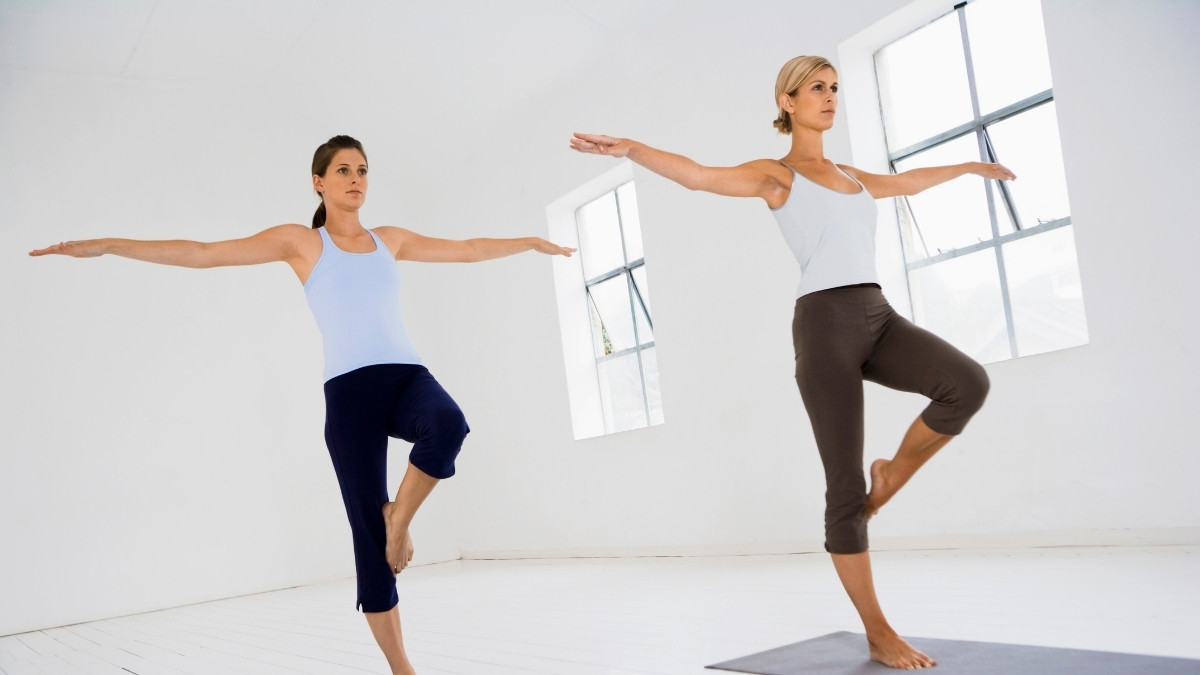
Research shows people who can’t balance for 10 seconds on one leg often need focused balance work. In fact, those who hold for under 5 seconds have 3× higher fall risk, according to studies. The good news? An NIH study found balance training three times a week can reduce falls by 24%.
Do this daily for 3–5 minutes total, switching legs often.
It’s one of the best exercises for seniors—simple, quick, and proven to help you stay steady, confident, and independent.
5. Resistance Band Rows (Back and Posture)
Hunched shoulders or neck pain from sitting too long? Resistance Band Rows are one of the best posture exercises to fix that. They target the rhomboids and middle traps—the muscles that pull your shoulders back and fight the forward head posture that often comes with age or desk work.
All you need is a resistance band with handles (start with 5–10 lbs of resistance). Anchor it at chest height—around a door or pole. Stand tall, hold the handles, and pull your elbows straight back while keeping your wrists neutral. Squeeze your shoulder blades together, then return slowly. That slow return builds control and strength.
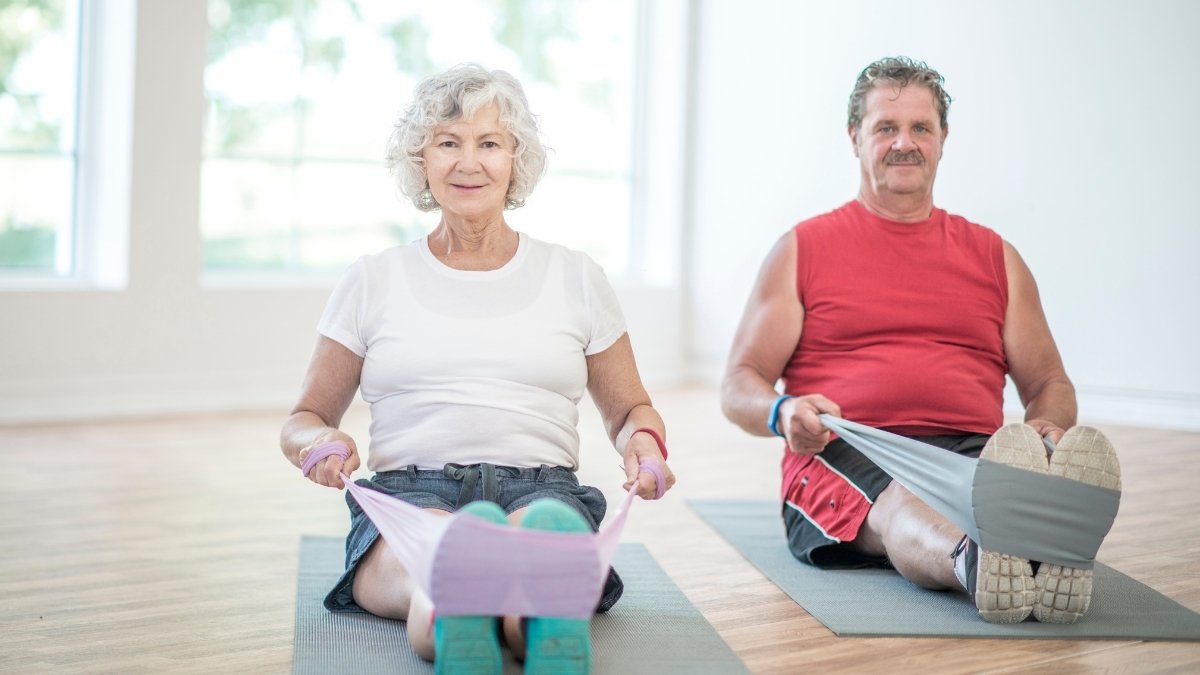
Bands are great for strength training over 50 because they’re joint-friendly, portable, and adjust naturally to your strength level. You get solid results without heavy weights.
Do this exercise 2–3 times a week, 2–3 sets of 12–15 reps. Over time, you’ll notice better posture, fewer aches, and a stronger back.
It’s one of the simplest resistance band exercises—and it can help you stand taller, breathe easier, and feel stronger every day.
6. Step-Ups (Functional Leg Strength)
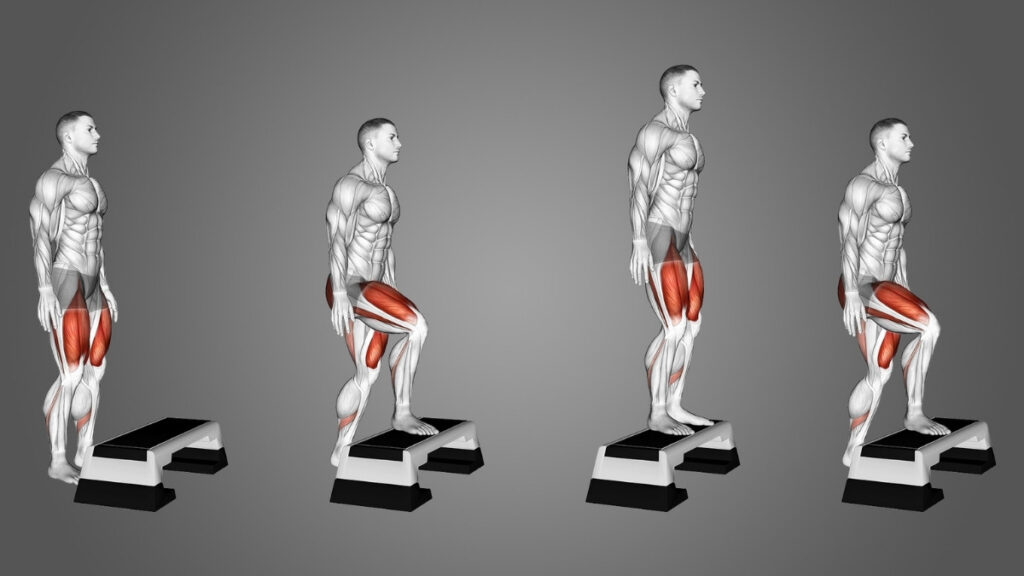
Want stronger legs for everyday life—like climbing stairs or getting out of a car? Step-ups are one of the best functional exercises for seniors because they mimic real-life movements that keep you active and independent.
This leg strength exercise also fixes imbalances by working one leg at a time. To start, use a 4–6 inch step or bottom stair. Hold onto a rail or wall if needed. Step up with one foot, drive through your heel, and fully extend your hip at the top. Step down slowly and repeat. As you get stronger, increase the step height to 10–12 inches.
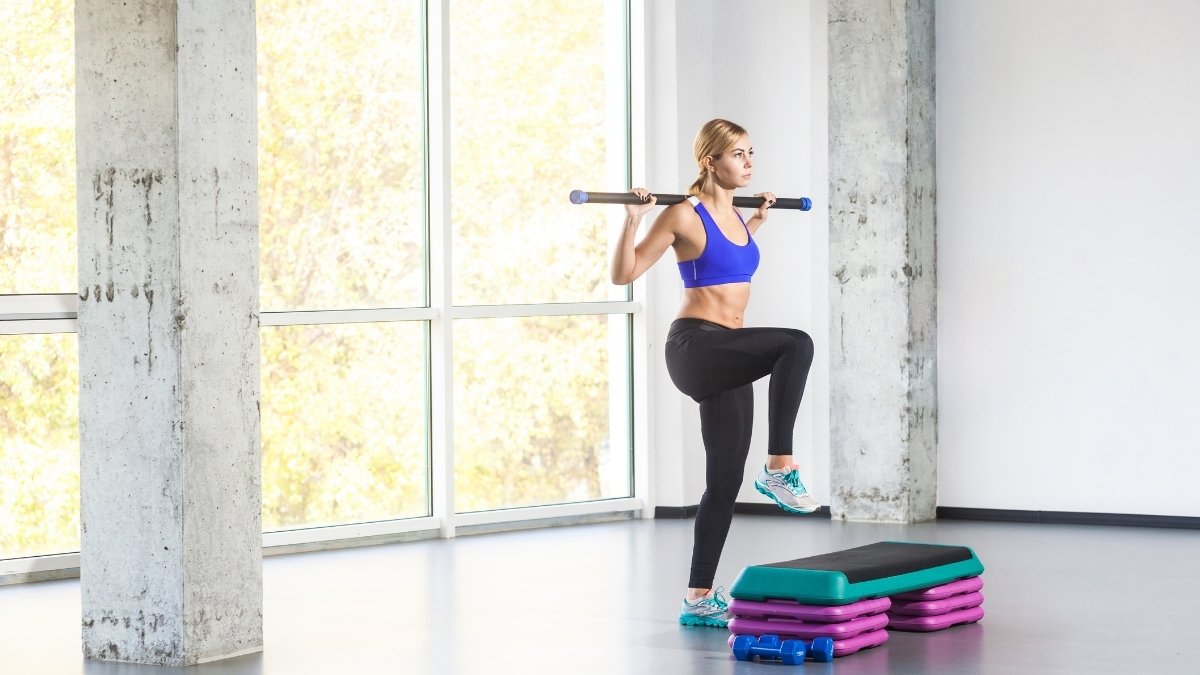
Research shows step-ups activate your glutes 25% more than squats, making them a smart pick for exercises for people over 50. Always use a sturdy surface or handrail for safety.
Do this 2 times per week, 2–3 sets of 8–10 reps per leg.
It’s simple, safe, and one of the best ways to keep your legs strong for the movements that matter most.
7. Glute Bridges (Hip Strength and Mobility)
Sit a lot during the day? Then your glutes are probably weaker than you think. Glute Bridges are one of the best hip strength exercises and low impact exercises for older adults because they wake up muscles that support walking, standing, and balance.
Here’s how to do it: Lie on your back with knees bent and feet flat on the floor. Keep arms at your sides. Lift your hips until your body forms a straight line from shoulders to knees. Squeeze your glutes at the top and hold for 2–3 seconds before lowering slowly. This short pause increases muscle activation and control.
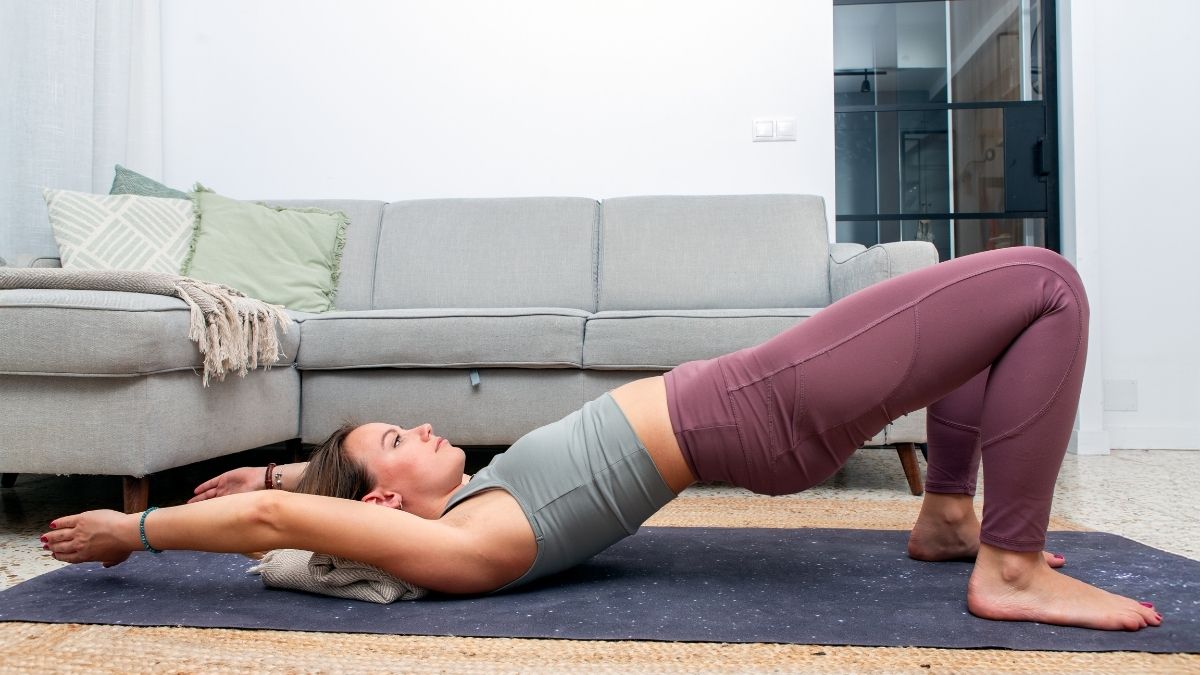
These glute exercises over 50 help more than just strength. They ease lower back pain, improve posture, and restore hip mobility without putting pressure on your spine. In fact, studies show glute bridges strengthen hip extensors without spinal compression—a major plus for older adults.
Try them 3–4 times a week, 2–3 sets of 12–15 reps.
When ready, add challenge: single-leg bridges, resistance bands, or feet on a step.
It’s a simple move that keeps your hips strong, flexible, and pain-free.
8. Walking (The Ultimate Low-Impact Cardio)
Looking for the simplest way to stay healthy after 50? Walking is the best low impact cardio over 50—easy on your joints, free to do, and proven to help you live longer. Studies show walking 30 minutes a day can reduce all-cause mortality by 20% in adults 50+.
It’s more powerful than it looks. Walking strengthens your heart, lowers blood pressure, helps manage weight, and keeps your bones strong without heavy impact. It’s one of the best exercises for people over 50 because it builds endurance while protecting your joints.
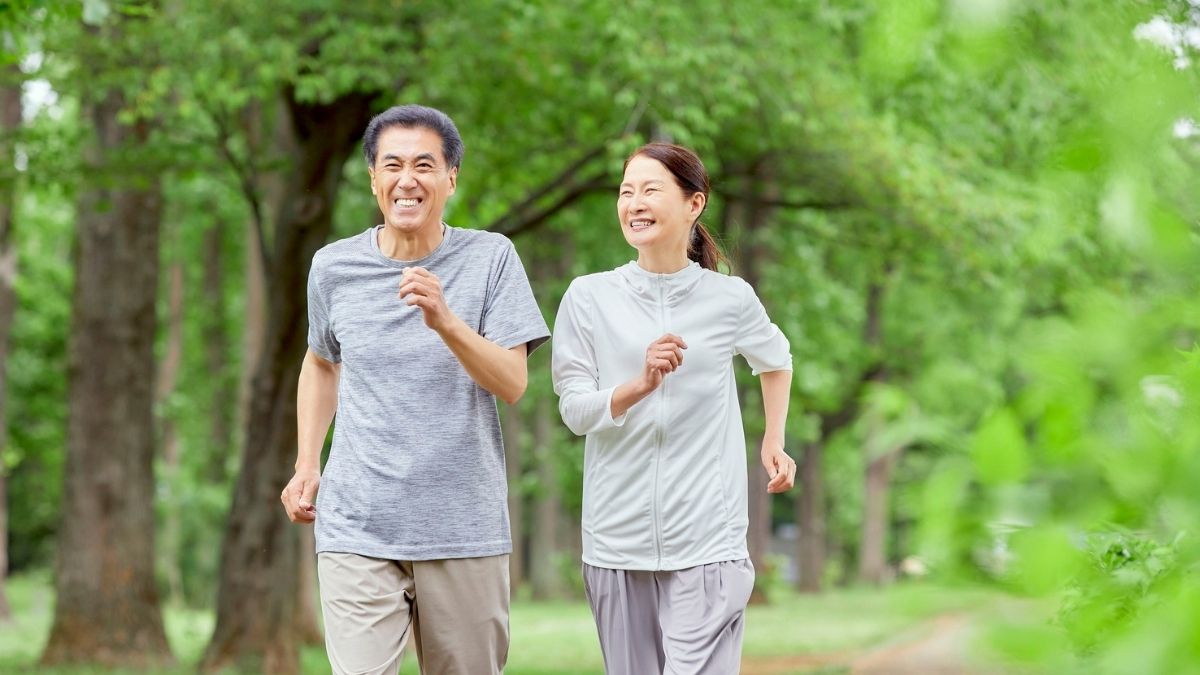
Follow the American Heart Association guideline: aim for 150 minutes of moderate walking per week—that’s about 30 minutes, 5 days a week. At a moderate pace, you should be able to talk but not sing, roughly 60–70% of your max heart rate.
A brisk walk burns about 150–200 calories in 30 minutes. To keep improving, add hills, increase your pace, or include short bursts of faster walking.
It’s simple, safe, and effective.
Walking for fitness keeps your heart strong, your mind clear, and your body moving—no gym required.
Creating Your Weekly Exercise Routine
Not sure how to fit everything in? A balanced exercise routine for seniors mixes strength training, cardio, and balance work—keeping your body strong, steady, and flexible.
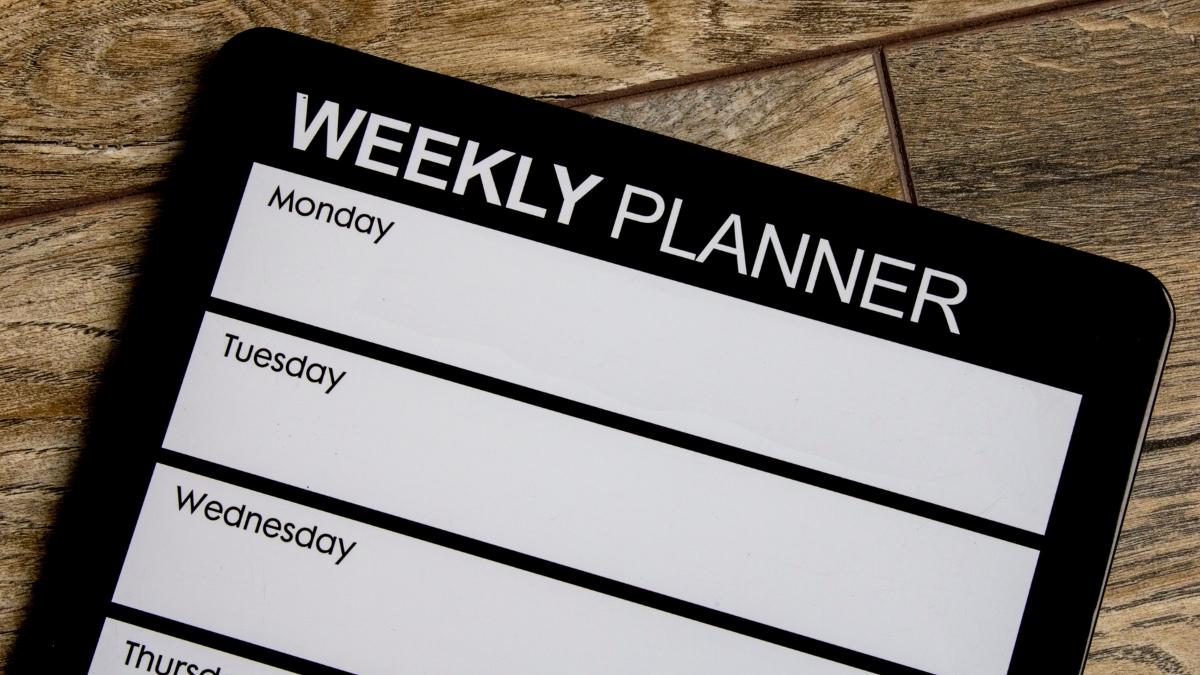
Here’s a simple plan:
- Monday: Squats, rows, bridges
- Tuesday: 30-min walk
- Wednesday: Rest or gentle stretching
- Thursday: Step-ups, push-ups, bird dog
- Friday: 30-min brisk walk or light hills
- Saturday: Balance drills (single-leg stands, wall holds)
- Sunday: Rest or easy walk
Studies show 2 strength days maintain muscle; 3 days build it. Give each muscle 48 hours to recover before training again. When exercises feel easy, add reps or increase resistance every 4–6 weeks.
The key? Consistency beats intensity. Doing something 4 days a week matters more than one perfect workout.
Conclusion:
Strong muscles. Steady balance. A healthy heart. These 8 moves are the best exercises for seniors because they cover everything aging bodies need—muscle strength, bone density, balance, and cardiovascular health.
The truth is, consistency matters more than perfection. You don’t need fancy equipment or long workouts. What counts is showing up—week after week. The strength training and low impact cardio in this plan will help you stay active and independent.

Remember, the progressive overload principle works at any age. Start light, focus on form, and add resistance slowly. Over time, you’ll move easier, feel stronger, and stand taller.
Start with just 2–3 of these exercises this week. Master the basics. Use modifications that match your fitness level, and progress at your own pace.
Your future self—climbing stairs with ease, playing with grandkids, living without limits—will thank you for the small steps you take today. These really are the best exercises for people over 50 to stay fit for life.

